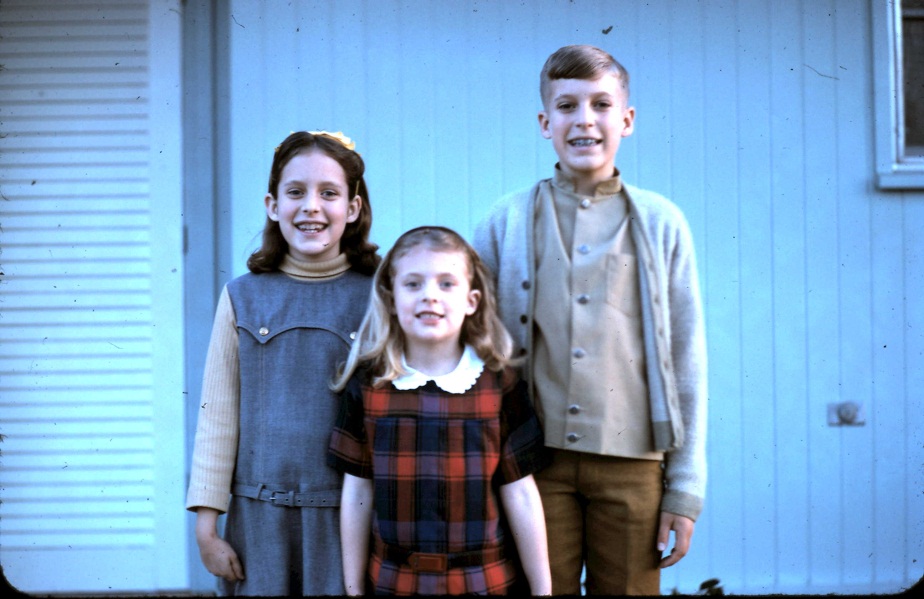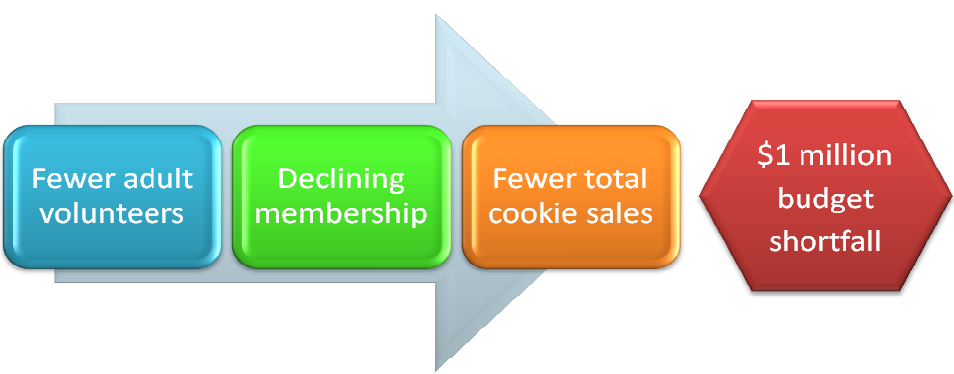Business Model Lessons from CO Girl Scouts
7/25/13 / Karla Raines


From left to right – Karla Haaland Raines, Gayle Haaland and Mark Haaland 1969.
Scouting was big in my family. My siblings and I were all scouts. I still have my sash covered in merit badges and recall fondly the path of discovery and learning each one symbolizes.
Yesterday, many other business and community leaders across Colorado received an email entitled “Changing and Challenging Times for Girl Scouts” from Stephanie Foote, President and CEO. To summarize, the main challenges faced in Colorado include:
- Declining membership
- Difficulty in recruiting adult volunteers as troop leaders
- Under-funded pension plan
- Decreased reserve due to expenses incurred in consolidating the various chapters in Colorado
- Lost revenues in 2012 due to wild fire closures of summer camps and reimbursement of camper fees
Given my consulting work in nonprofit strategy and business model design, I couldn’t help but read the email from that perspective. In particular, I was struck by the following quote.
This has led to a $1 million budgetary shortfall in our cookie sale this winter; not because girls sold fewer cookies, but because there were fewer girls selling. (underline added)
In essence, Girl Scouts of Colorado has a business model design challenge, one shared with other nonprofits with business models that depend on volunteers. As Ms. Foote notes in the email:

This is one of the most illustrative examples I’ve seen about the integral role volunteers play in the business models of many nonprofits. As we’ve observed at Corona, and I’ve blogged about previously, there are five fundamentals to nonprofit sustainability in the 21t century.
- A relevant mission
- A clear and compelling identity
- A well-articulated strategy that uniquely positions the organization for success in the marketplace
- Strong supporting capacity
- A solid business model:
- Distinct programs that meet a compelling need and demonstrate results per the mission
- Financial resources that support annual operations and long-term growth and sustainability
- An engaged community that champions the mission via volunteering, evangelizing, and investing (inclusive of board members, volunteers, community supporters and donors)
Does your nonprofit’s business model rely on volunteers – as program staff or fund raisers perhaps? If so, Corona’s Synergistic Business ModelTM framework is a valuable resource for you. It is the first framework to place community engagement on equal footing with programs and funding.
Scouting prepared me to tackle new challenges. I’ve earned my own merit badges of sorts as a consultant, learning and growing with my clients. Here’s to Girl Scouts of Colorado’s success in tackling these fundamental business model challenges.